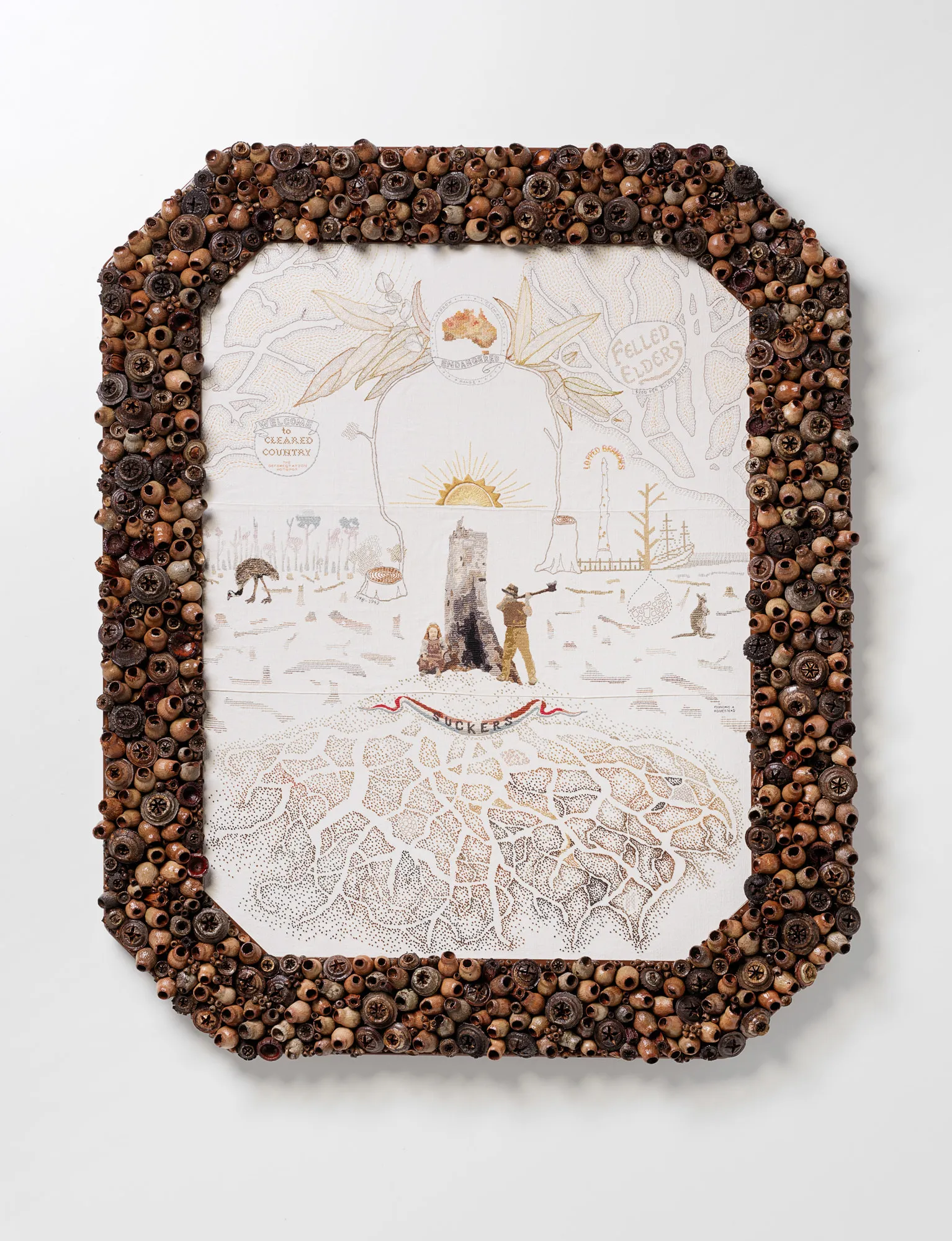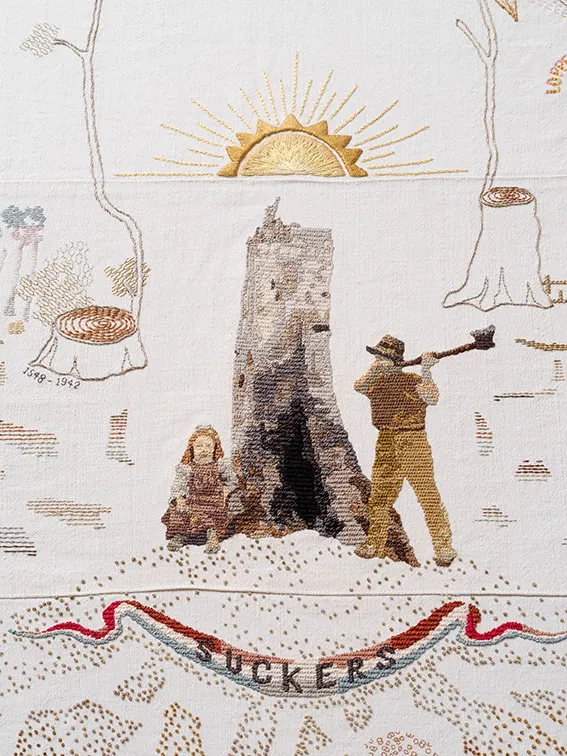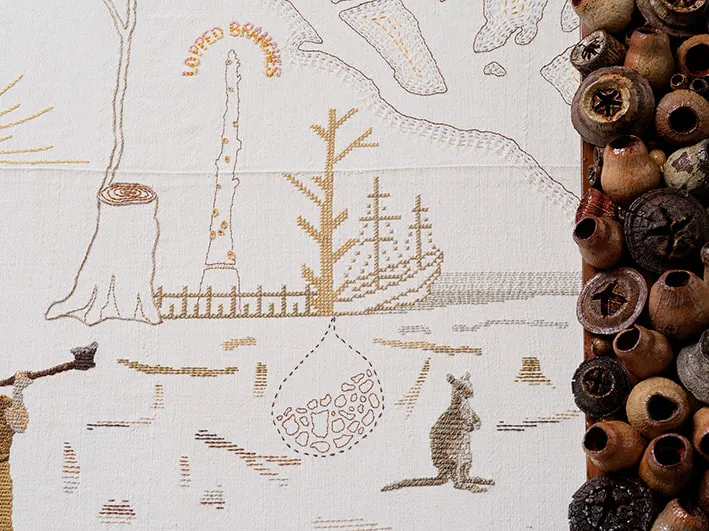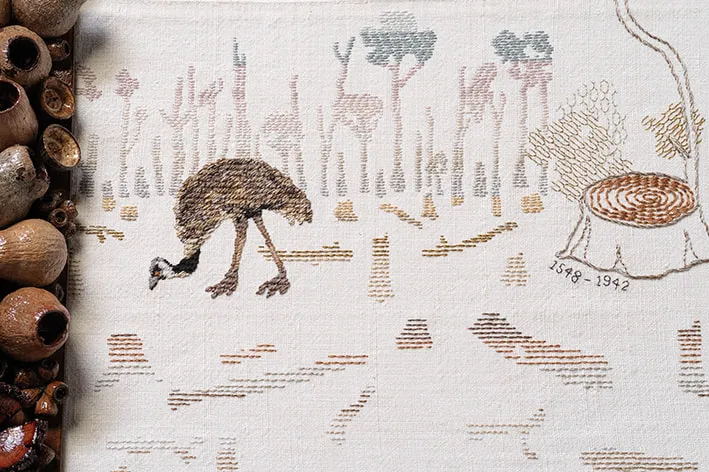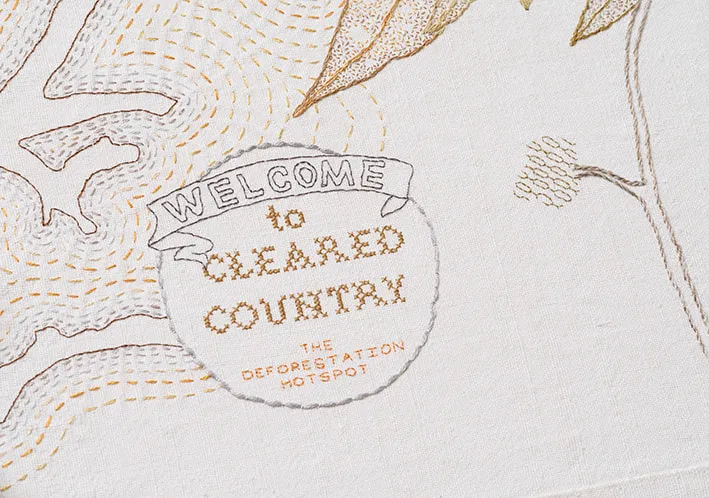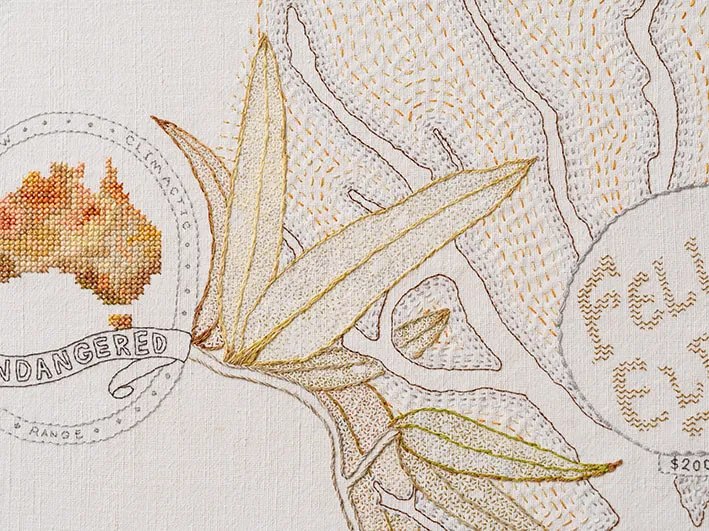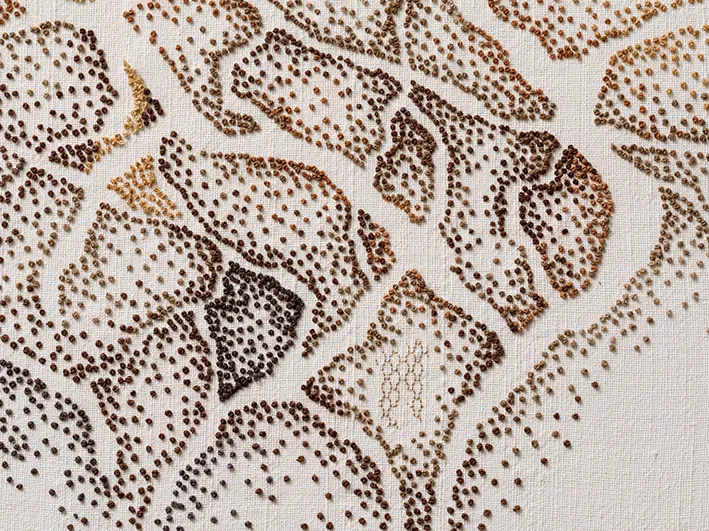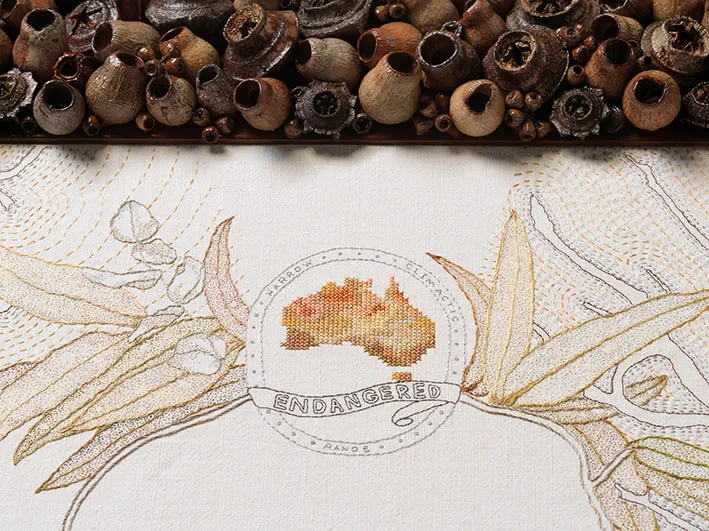Suckers: Coat of (lopped) Arms
105cm (W) x 133cm (H) x 7cm (D)
2021, Found gumnuts, repurposed vintage linen, various threads
Sera Waters | Artist
Since colonial times, tales involving Eucalypts have become knotted within the tumultuous tangles of Australian history. Like the trees, historical narratives have been trimmed, lopped, and made productive for a national identity and economy. Eucalypts were co-opted into settler colonial needlework and home-craft traditions too, as vigorous symbols of Australianness and backdrops for embroidered fauna. While it is important to recognise the industrious homemaking of prior generations, as well as the under-appreciated knowledge held within handicraft, often the truths of colonisation, the trauma, damage and aftermaths have not been embroidered upon doilies, aprons or samplers. Suckers: Coat of (lopped) Arms uses embroidery and gumnut craft to tell unsettling and ongoing truths about the extensive damage still being inflicted upon this Country rich with ancient roots.
In looking back, as well as forward, grief arises as we grapple with accumulating climactic changes impacting the interconnected ecologies of Eucalypts, human and non-human species. As leaders of complex ecologies Eucalypts are central within Suckers; disclosing their maltreatment via chopping, grubbing, and widespread deforestation, but also signalling ways forward. Eucalypt suckers, which grow from roots, stumps and trunks, have been exploited in cycles of production and consumption yet are also symbols of hopeful re-growth. Suckers, as well as roots, embody how eucalypts are resilient survivors, prospering, sharing and caring under trying circumstances, resources and loss.
Many ‘patterns’ within Suckers, from the tent-stitched girl or emu, cross-stitched fence, black-worked gum silhouettes and colonial knots have been drawn from artefacts in the Powerhouse collection, including a needle-worked coat of arms, cross-stitched samplers, and photographs produced by Kerry and Co. These methods of reckoning with pasts is pragmatically realised too, with the repurposing of linen and threads, and reworking of textile traditions imported to these shores by my own ancestors. Re-directing records, techniques and traditions of the past, begins a process of taking responsibility for the great damages of settler colonisation in order to rebuild a future built upon truth and care.
Photograph: Grant Hancock
Thank you to Melinda Rackham, Natasha Amer, Jade Orr for collecting and supplying gumnuts, and Julia Robinson for her studio assistance.
